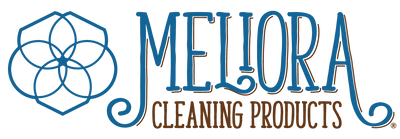Our impact as a product making company isn't just the from the stuff we make that ends up in your home. It's also in the waste we create in the factory.
We realized a long time ago that we weren't going to be able to shove the trash from our production floor into a mason jar, but that didn't stop us from finding ways to track and reduce the waste we create.
HOW WE TRACK OUR WASTE
As we make and ship our products in our Chicago, IL factory, we weigh each and every piece of waste. Whether it's destined for the landfill, the recycling center, or the compost heap, we weigh it before it goes out the door.


Above are two of our Waste Separation Stations. First is one of our production floor separation stations. Trash going to the landfill and recyclable cardboard are collected and sorted in a couple stations on the shop floor. This is the majority of what our production team handles, so we make it easy for them to sort as they work.
Second is our factory-wide sorting station.
- Aluminum cans and scrap metal are collected and sent off locally for proper processing
- Some plastic bags can be reused as trash bags, but the rest of the plastic bags and film (ugh, pallet wrap!) are brought to a local grocery store by the carload for recycling. Kind of like those bins at the front of the store, but much bigger!
- We utilize Terracycle's rubber glove recycling program. We're a drop-off for any of our neighbors who want to join in - the more the merrier.
- Our team composts our food scraps and anything else we can, through a program we worked to set up with our building. Huge shout-out to ICNC, Green Diaper Babies, Rhine Hall, and everyone else in our building who worked to get this up and running!
- Some things we hold onto, in hopes of finding a better option than the landfill. We just learned a local appliance store accepts polystyrene for compacting and re-use as furniture. They're going to love the bags of weird pieces of styrofoam we've collected the last 2 years!
MEASURE, THEN IMPROVE
As part of our annual commitment to reduce our impact on the planet, we set ourselves a goal of 10% LESS total waste - when normalized to revenue - from year to year. Simply put, if we created 10 pounds of total waste per thousand dollars of revenue [lb/$000] last year, our goal would be 9 lb/$000 this year.
Why do we do it this way? It's a way to make sure we're looking at the right things as we grow. If we pledge to never make more than 20 pounds of landfill waste a month, what happens when we get in an order that's bigger than all of last year's sales combined?
These normalized metrics allow us to compare how we're doing, even as our sales - and impact - continue to grow, without being restrained by faulty guidelines.
Fun fact: some things are easier to make more efficiently as we grow. That's why the word "scale" gets thrown around so often. Big companies have a HUGE advantage of ways to reduce their impact.

Take-back programs, like we have for these caustic soda (lye) barrels are only available when you're big enough to be able to buy in bigger quantities. Pallets, or train cars, are more efficient than small bags and boxes. Big corporations SHOULD be more efficient and generate less waste than smaller companies like ours. Question is - are they?
HOW HAVE WE DONE?
The only way to know you're really getting better is to start by measuring what you're doing today. Starting in 2016, we weighed everything that went out our door as trash. That could be food scraps, raw material packaging, or the bane of our existence - pallet wrap. Every one of these things is necessary to get raw materials into our factory to send people- and planet-friendly products back out.
As we've grown, we've been fortunate to obliterate our 10% reduction goal every year (2017, 2018, and 2019 YTD). Here's a snazzy chart to show you how we're doing:

Since 2016, we've reduced our total waste by 46%, 24%, and 45% over the prior year. In total, we've gone from almost 17 lb/$000 in 2016 to 3.7 lb/$000 through the first half of 2019. That's a 78% total reduction!
Our absolute waste may be higher as we grow, but we've gotten WAY more efficient. And really, that's the goal - to get better than we were yesterday. We may not be a zero waste facility - yet - but we're way closer now than ever.
What do you think? Is there something you'd like to understand better? Did we miss something? Tell us - we'd love to hear from you!!

